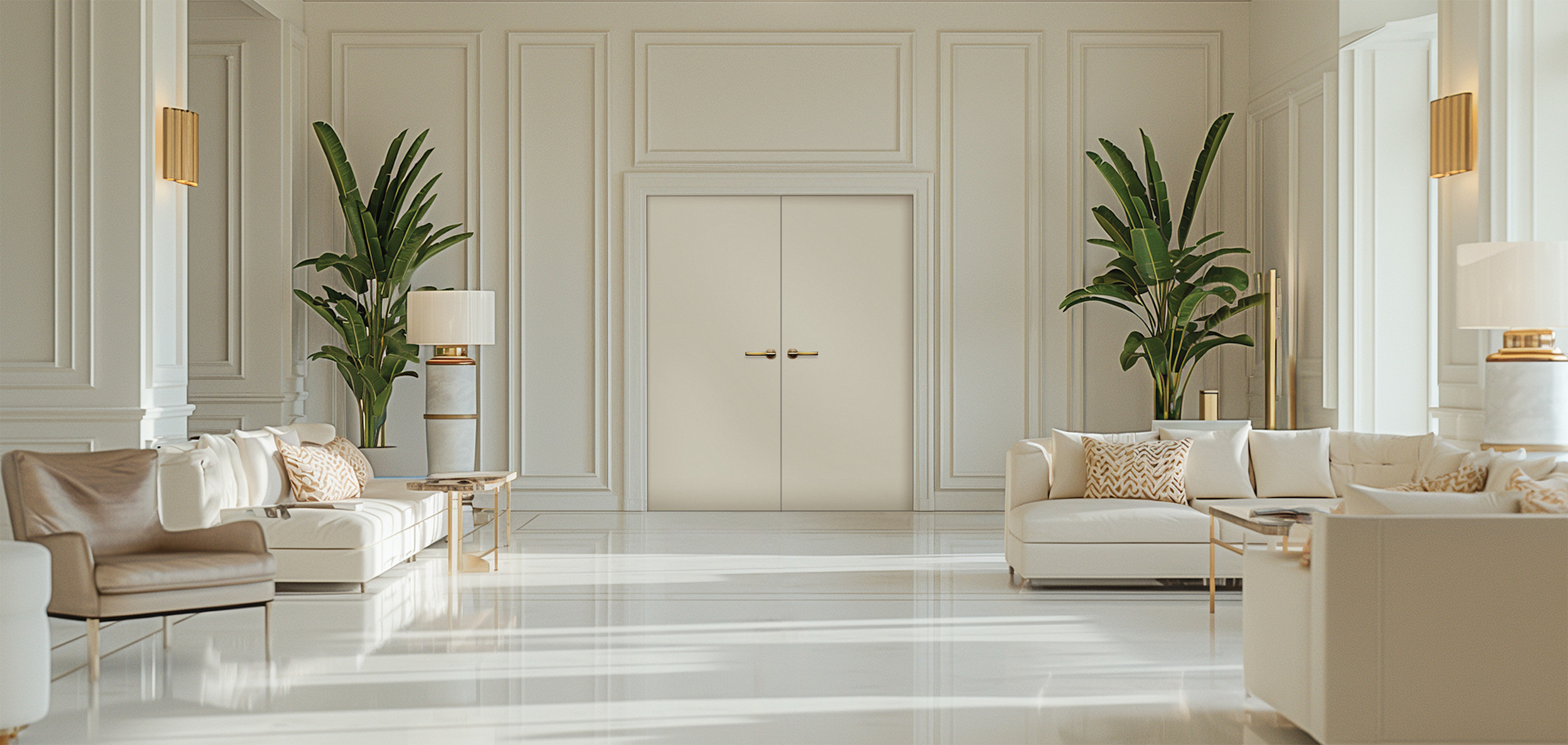
How to Choose the Best Material for Commercial Paintable Doors
When specifying paintable doors for commercial projects, understanding the materials used in their construction is crucial. The material of a door can significantly impact its durability, cost, and the specialty options available. Different materials provide various advantages, including moisture resistance, impact durability, and ease of maintenance. Here, we’ll take a closer look at the most common materials used for paintable doors and their unique characteristics.
1. Medium Density Overlay (MDO)
MDO is a high-performance material often regarded as one of the best options for paintable doors due to its smooth, durable surface and exceptional strength. MDO is constructed by bonding kraft paper saturated with resin to a suitable substrate. The result is a hard, moisture-resistant material ideal for painting.
• Durability: MDO is one of the most durable materials, resistant to scratches, scuffs, and moisture, making it suitable for high-traffic areas.
• Smooth Surface: The smooth surface of MDO doors allows for consistent paint application, whether using latex, oil-based, or alkyd paints.
• Moisture Resistance: Its moisture-resistant properties make it ideal for environments prone to humidity or occasional water exposure, such as healthcare facilities or hospitality spaces.• Premium Option: Often considered a premium paintable door option, MDO doors provide superior strength and durability. They can also be fire-rated, acoustic-rated, attack-resistant, and even lead-lined for specialty applications.
3. Hardboard and High-Density Fiberboard (HDF)
HDF is a dense, durable material made from exploded wood fibers that are compressed under high pressure. Hardboard, a specific type of HDF, is further categorized into standard grade and tempered versions, which offer higher durability.
• Strength and Durability: Hardboard doors are highly resistant to dents and dings, making them suitable for high-traffic areas. Their durability makes them ideal for an environment such as hospitality spaces.
• Smooth Surface for Painting: Hardboard provides a flat, smooth surface that is perfect for painting. It offers a uniform texture that results in consistent, professional-looking finishes.
• Cost and Versatility: Hardboard and HDF are mid-range options in terms of cost. These materials also offer fire-rated and acoustic-rated options, providing versatility for different applications.
4. Molded Panel Doors
Molded panel doors provide a decorative alternative to the smooth surfaces commonly found on paintable doors. These doors feature designs such as two, four, or six-panel configurations, offering a range of design options at an affordable price.
• Decorative Designs: Molded panel doors are designed to mimic the look of traditional stile and rail wood panel doors, making them a great option for commercial environments where visual appeal is important.
• Material Composition: Molded panel doors are typically made from hardboard or HDF, providing durability and strength.
• Fire-Rated Options: While molded panel doors may have limited acoustic and fire-rated options due to the routed core, they still offer an attractive, cost-effective solution for commercial interiors.
5. Medium-Density Fiberboard (MDF)
MDF is another popular material choice for paintable doors, known for its cost-effectiveness and versatility. It is made from recycled wood waste compressed under high pressure, resulting in a smooth, dense material.• Cost-Effective: MDF doors offer a budget-friendly option for commercial projects without compromising on quality.
• Paint-Friendly: MDF is ideal for painting, allowing for a smooth, even finish that can be easily customized to match a specific design or color scheme.
• Durability: While MDF is strong enough for interior applications, such as office spaces, storage rooms, or hallways, it is not as durable as MDO. In heavy-use environments, MDF doors may require more frequent maintenance and may not withstand wear as effectively.
Conclusion: Choosing the Right Material for Paintable Doors
When specifying paintable doors for commercial projects, it’s essential to choose the right material based on the project’s budget, durability needs, and aesthetic goals. Whether you need the exceptional strength and smooth finish of MDO, the cost-effectiveness of MDF, the durability of HDF, or the decorative appeal of molded panel doors, understanding the properties of each material can help ensure that you make the best decision for your project.
From high-traffic areas like healthcare and hospitality spaces, paintable doors offer versatility and functionality in a variety of settings.